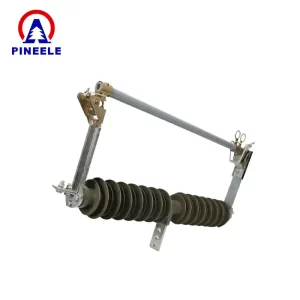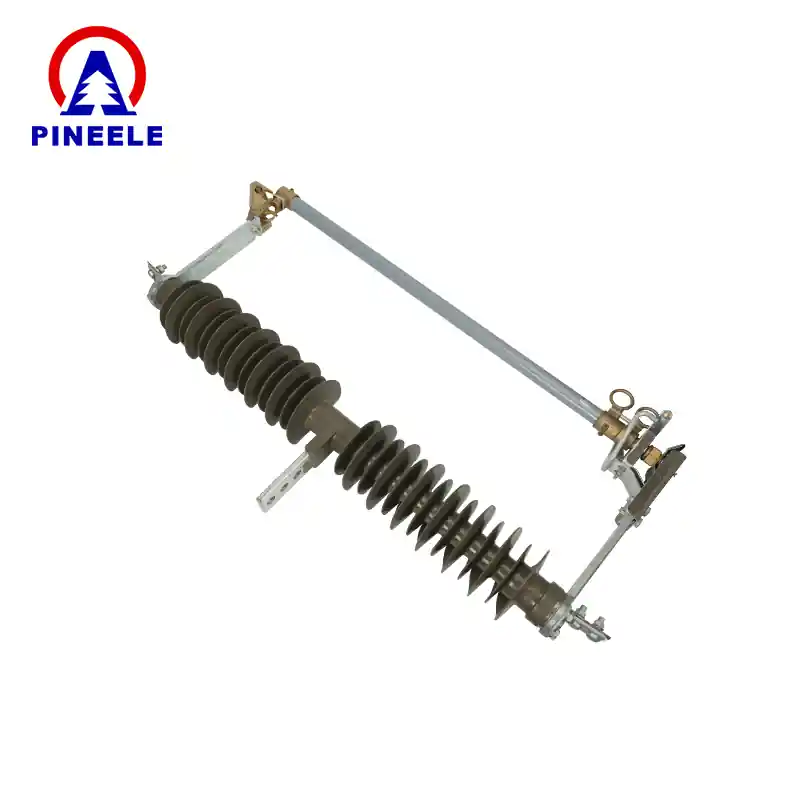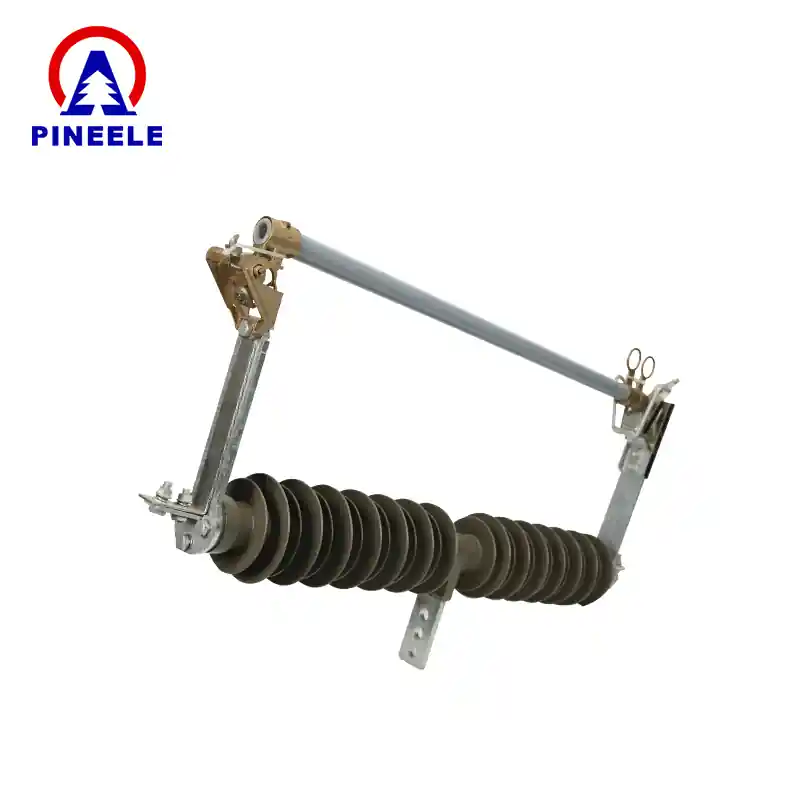
High-Voltage Fuses | IEC 60282-1 Certified Circuit Protection
Core Value Proposition
Protect critical power infrastructure with precision-engineered high-voltage fuses, delivering:
Ultra-Fast Response: 1-5ms fault interruption (IEC 60282-1 compliant)
Custom Ratings: 6.3kA to 63kA breaking capacity options
Extreme Environments: -40°C to +85°C operation | 98% humidity resistance
Key Applications
- Substation transformer protection
- Wind turbine collector circuits
- Mining switchgear overcurrent protection
Certifications
IEC 60282-1 & IEEE C37.40 Standards
CE/UKCA/EAC Certified Options
UL 248-14 Safety Compliance
Exploring High Voltage Fuse Types: The Core of Power System Protection
High voltage fuses play a pivotal role in maintaining the safety and efficiency of electrical circuits operating at voltages exceeding 1,000 volts. As crucial components in the power distribution network, they protect high-voltage systems, including transformers, substations, and transmission lines, by interrupting excessive or fault currents. Without these devices, circuits would be vulnerable to damage from overloads, short circuits, or faults, leading to costly repairs, equipment downtime, and even safety hazards.
These fuses are engineered to act quickly, disconnecting the faulty circuit in milliseconds to prevent further damage. They come in a variety of types, each suited for specific applications and environments. The most common high voltage fuse types include:
- Cartridge Fuses: Ideal for a wide range of power systems, these fuses offer robust performance in protecting equipment against overloads and faults. Their compact design makes them a popular choice for compact switchgear.
- Liquid-Filled Fuses: These fuses use a liquid medium to extinguish the arc when the fuse element melts, providing superior protection in high-current fault conditions. Their ability to handle larger fault currents makes them suitable for critical applications such as transformers and high-voltage circuit breakers.
- Expulsion Fuses: Expulsion fuses are designed to expel the molten fuse element when a fault occurs, effectively clearing the circuit. These fuses are commonly used in outdoor substations or on overhead distribution lines where environmental factors must be considered.
High voltage fuses not only offer protection against electrical faults but are also integral to ensuring the longevity and reliability of electrical equipment. They are specifically designed to handle high fault currents, and their breaking capacity is critical for preventing catastrophic damage. Understanding the different types of high voltage fuses and their applications helps ensure that the right protection is in place for each part of the power system.
Understanding High Voltage Fuses: Key Components for Protecting Power Systems
High voltage fuses are essential protective devices in electrical systems designed to operate at voltages above 1,000 volts. These fuses provide critical safety by interrupting abnormal currents, such as overloads or short circuits, that could damage high-voltage equipment. High voltage fuses play a central role in safeguarding transformers, substations, transmission lines, and various other high-voltage apparatus. By providing reliable protection, they help prevent catastrophic failures and maintain the stability of power distribution networks.
What is a High Voltage Fuse?
A high voltage fuse is a safety device that is designed to protect electrical circuits and equipment from excess current caused by faults. When a fault occurs, the fuse element within the high voltage fuse melts due to the high current, creating an open circuit and interrupting the flow of electricity. This quick response minimizes the risk of damage to the power system, ensuring that expensive and sensitive equipment such as transformers and circuit breakers are protected from faults.
Types of High Voltage Fuses
High voltage fuses come in several types, each tailored to specific applications and environmental conditions. The most common high voltage fuse types include:
- Cartridge Fuses: These are one of the most widely used types of high voltage fuses. Cartridge fuses are characterized by their cylindrical design and are used in both indoor and outdoor applications. They provide reliable protection for low- and medium-voltage circuits, offering superior performance in protecting equipment against overloads and faults.
- Liquid-Filled Fuses: Designed for applications with high fault currents, liquid-filled fuses use a liquid medium to quench the arc when the fuse element melts. This type of fuse is suitable for high-power applications, such as transformers and switchgear, where there is a need to interrupt larger fault currents effectively.
- Expulsion Fuses: Expulsion fuses are designed for outdoor applications, such as power distribution systems and substations. These fuses use the expulsion method to clear the circuit, where the molten material from the fuse element is expelled to extinguish the arc. Expulsion fuses are used in environments where weather conditions and exposure to environmental factors can affect fuse operation.
- High Voltage Fuse Links: These are specialized fuses that are typically used in the protection of high-voltage circuits in areas like electrical power stations. The fuse link consists of a metal element designed to melt and break the circuit under excessive current conditions.
How High Voltage Fuses Work
The operation of a high voltage fuse is based on its ability to detect excess current and interrupt it rapidly. When an overload or short circuit occurs, the current flowing through the fuse increases, causing the fuse element (often a thin metal wire or strip) to heat up and melt. This break in the fuse element creates an open circuit, stopping the flow of electricity. The arc formed during this process is quenched, either by the fuse’s built-in mechanism, such as a liquid medium or expulsion method, to prevent further damage to the power system.
Why are High Voltage Fuses Important?
High voltage fuses are crucial for maintaining the safety and integrity of electrical systems. Their primary function is to protect against damage caused by short circuits, overloads, and faults, which can lead to expensive repairs, system downtime, and even catastrophic failures. Without fuses, electrical equipment like transformers, power lines, and circuit breakers would be susceptible to extreme conditions that could result in fires, explosions, or permanent damage.
Additionally, high voltage fuses contribute to the overall efficiency of the power grid. By providing fast-acting protection, they ensure that power outages and disruptions are minimized, and the system operates smoothly. High voltage fuses are designed to handle fault currents of varying magnitudes, offering customizable protection for different types of power equipment.
Choosing the Right High Voltage Fuse
Choosing the correct high voltage fuse for an application depends on various factors, including the system's voltage, the nature of the load, fault current levels, and the environment in which the fuse will be installed. A proper selection ensures that the fuse will provide adequate protection without being unnecessarily large or small for the application. Consulting with electrical engineers and reviewing manufacturer specifications is essential when selecting high voltage fuses for specific protection needs.
High Voltage Fuse Applications
High voltage fuses are used in a variety of critical applications within power systems, including:
- Power Transformers: High voltage fuses protect transformers from overloads and fault currents that could damage windings or other internal components.
- Substations: Fuses are used in substations to protect electrical equipment from high fault currents and ensure the reliable operation of the entire grid.
- Transmission Lines: High voltage fuses provide protection for overhead and underground transmission lines, helping to isolate faults and prevent cascading failures.
- Switchgear: Fuses are used in switchgear systems to protect switching devices and prevent equipment failure due to short circuits.
High voltage fuses are essential components in any electrical power system. They provide reliable protection against faults, ensuring the safety of both equipment and personnel. With various types available, including cartridge, liquid-filled, expulsion, and fuse links, these fuses offer tailored solutions for different applications, helping maintain the overall efficiency and safety of the power grid.
Understanding the importance of high voltage fuses and their role in protecting electrical systems is key for designing and maintaining a resilient power infrastructure. By selecting the right fuse type, electrical engineers can optimize the performance and reliability of high voltage equipment, preventing costly damage and downtime.






